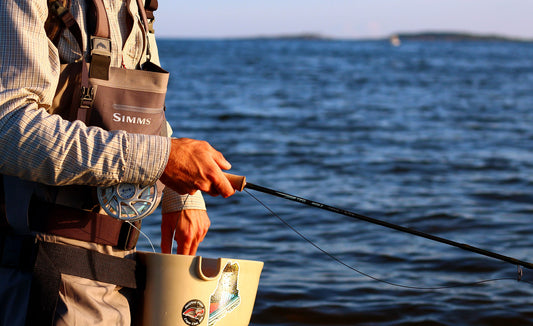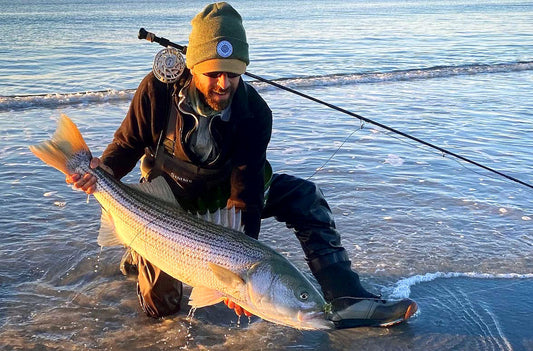All Points Fly Shop + Outfitter Blog

Sage R8 CORE vs. Sage Salt HD - 9wt Tested On T...
Words/Photos: Josh Thelin I have to admit, when I heard that Sage was releasing a new flagship rod which would be replacing the X, I didn't have much confidence that...
Sage R8 CORE vs. Sage Salt HD - 9wt Tested On T...
Words/Photos: Josh Thelin I have to admit, when I heard that Sage was releasing a new flagship rod which would be replacing the X, I didn't have much confidence that...

The Top 3 Intermediate & Sinking Fly Lines For ...
Top 3 Intermediate Fly Lines for Striped Bass: Intermediate striper lines are the most popular choice here in New England. We tell people if you had to have one, this...
The Top 3 Intermediate & Sinking Fly Lines For ...
Top 3 Intermediate Fly Lines for Striped Bass: Intermediate striper lines are the most popular choice here in New England. We tell people if you had to have one, this...

Fly Fishing for Trophy Striped Bass in Maine
Maine gets a reputation for being a producer of primarily small striped bass. However, what many people may not know is that the same prized fifty pounders being caught in...
Fly Fishing for Trophy Striped Bass in Maine
Maine gets a reputation for being a producer of primarily small striped bass. However, what many people may not know is that the same prized fifty pounders being caught in...

Video: Fly Tying - Articulated Beast Fleye
In this video, Joe Webster takes you through how to tie the Articulated Beast Fleye. This is a variation on Bob Popovics' Beast Fleye, but uses articulated shanks instead of...
Video: Fly Tying - Articulated Beast Fleye
In this video, Joe Webster takes you through how to tie the Articulated Beast Fleye. This is a variation on Bob Popovics' Beast Fleye, but uses articulated shanks instead of...

8wt or 9wt For Striped Bass?
This is a common question that I get a lot in the shop, via email/chat, or on the phone. It makes a lot of sense, as there is a fair...
8wt or 9wt For Striped Bass?
This is a common question that I get a lot in the shop, via email/chat, or on the phone. It makes a lot of sense, as there is a fair...

My Disastrous First Season Fly Fishing For Stri...
Hi, I’m a 16-year-old high school student living in Falmouth, Maine. This past summer I decided to try fly fishing for striped bass. I have been fly fishing for trout...
My Disastrous First Season Fly Fishing For Stri...
Hi, I’m a 16-year-old high school student living in Falmouth, Maine. This past summer I decided to try fly fishing for striped bass. I have been fly fishing for trout...